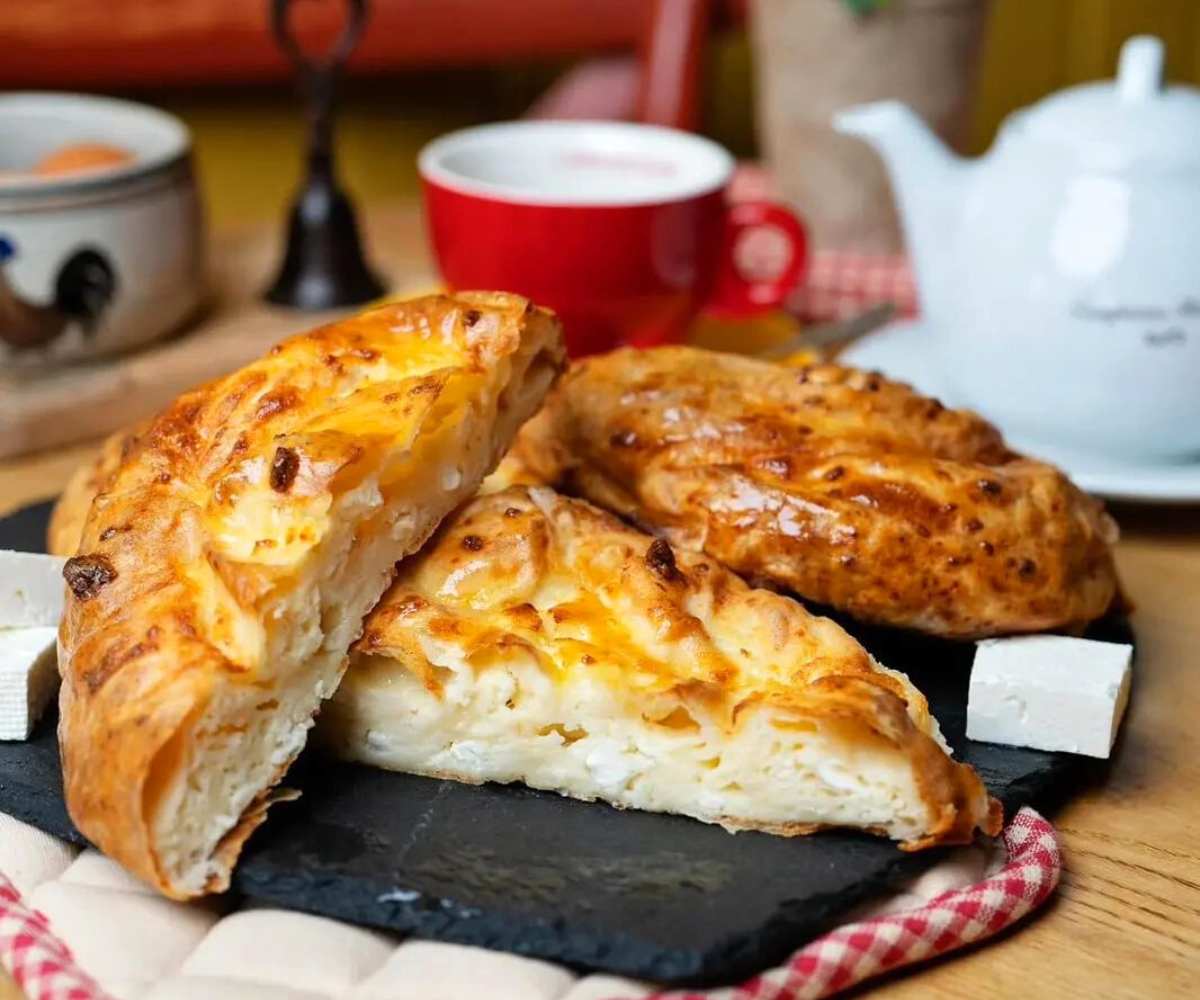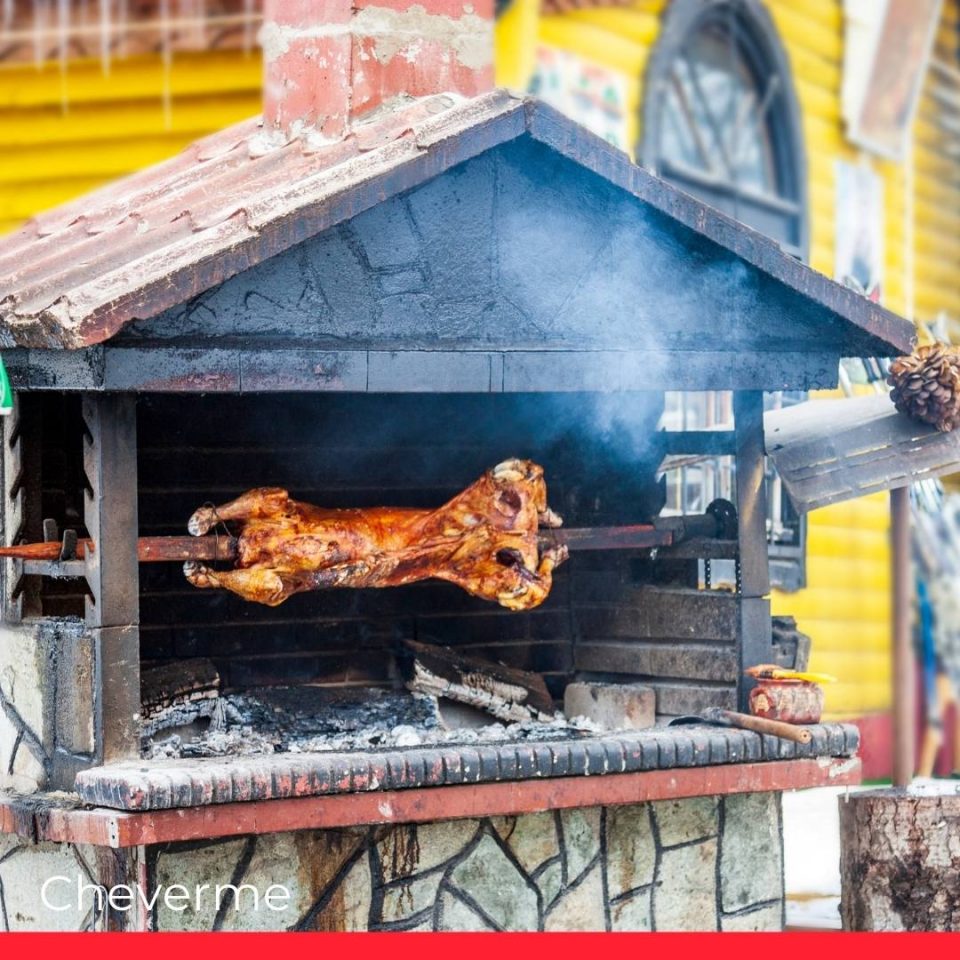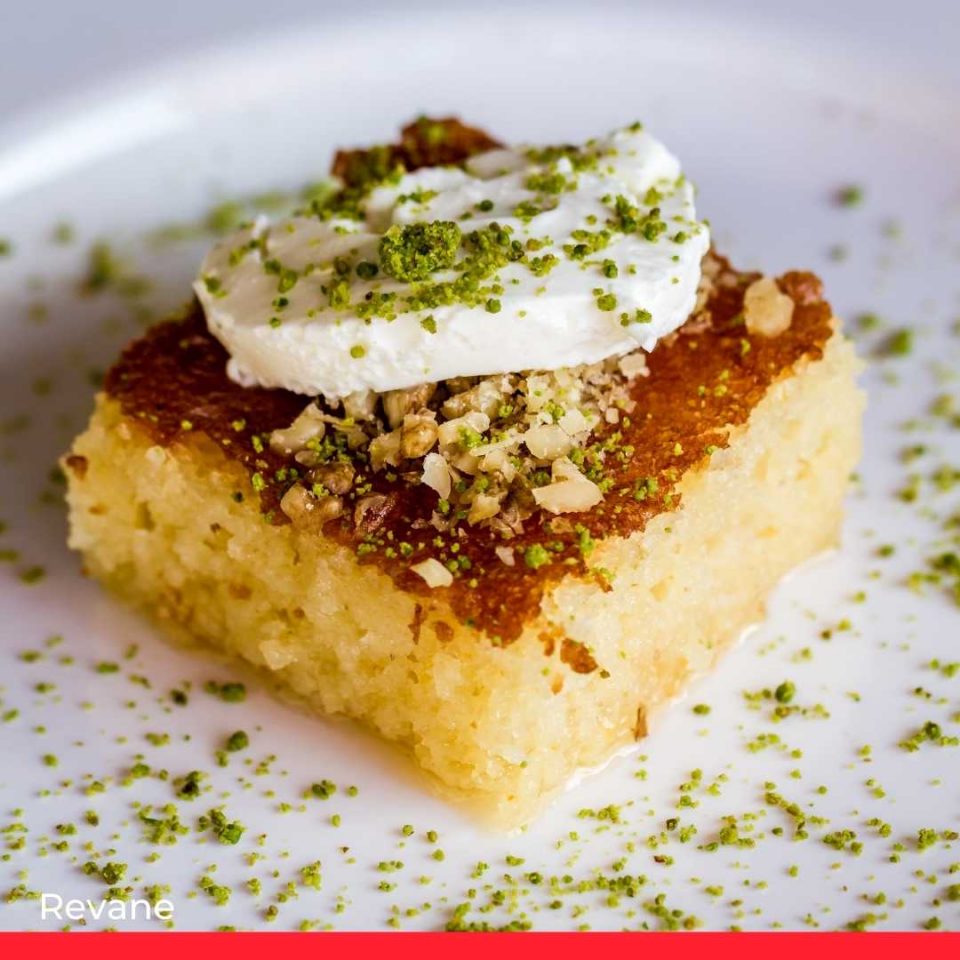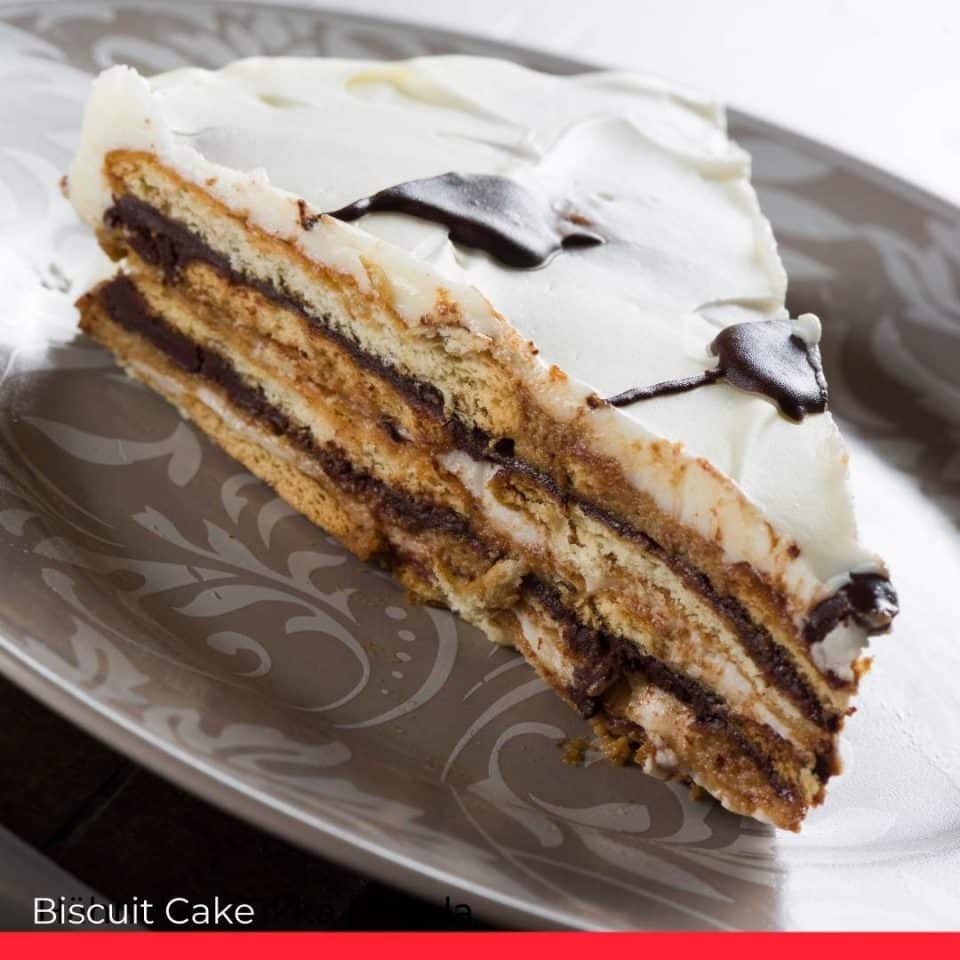22 Popular Bulgarian Foods You Need to Try Out

Bulgaria is a country in southeast Europe. It is bordered by Romania, the Black Sea, Serbia and North Macedonia. Many of Bulgaria’s important culinary influences come from Greece and Turkey.
Bulgarian cuisine has similarities to Middle Eastern food, sharing similar staple dishes with the Greeks, Turkish and Serbians but with a local flavor that sets them apart. Characteristic of the Bulgarian kitchen is the simultaneous heat treatment of most products with a beautiful balance between meat, yogurt, cheese, and vegetables.
Cattle are raised mainly for milk rather than meat, and the most popular meats are pork and lamb, the latter especially in the spring.
Bulgarians prefer grilling to deep-frying and sausages are widely used in dishes. While a range of vegetarian foods are available, fish and chicken are more common. Veal and goat also feature on Bulgarian menus, typically as the basis for mouthwatering stews.

Bulgarian recipes include a large variety of vegetables and spices but herbs also have a prominent place in the kitchen for their various healing properties.
Parsley is added to almost every dish and Bulgarians can’t imagine bean soup without spearmint, with the aroma of wild mint being a particular favorite. Basil and oregano are used to season meat, potato, and bean dishes while thyme is preferred both as a spice and for its medicinal qualities (colds, bronchitis, rheumatism, and heart disease).
Certain meals are linked to important celebrations: tradition requires vegetarian stuffed peppers and cabbage leaf sarmi on Christmas Eve, and cabbage dishes for the New Year’s Eve menu; fish (usually carp) is reserved for Nikulden, St. Nicholas Day, on December 6th, while roast lamb is served to celebrate Gergyovden, St. George’s Day, on May 6th.
Now let’s take a look at some of the most popular Bulgarian foods enjoyed both by locals and visitors alike.
1. Shopska Salad (Bulgarian Summer Salad)

With the same colors as the flag, Shopska Salad is often proclaimed as Bulgaria’s national dish. It is often said to have been invented in the 1960s by the socialist party to showcase local ingredients to tourists and promote the theory that Bulgarian vegetables were among the tastiest in Europe.
Another story of its origin is that it may came from the Shopi people who inhabited the Shopluk region of the Balkans.
You can easily make Shopska salad from roughly chopped tomatoes and cucumbers, sweet red and green peppers, green onions, red wine vinaigrette, covered with finely grated sirene cheese, and a sprinkle of parsley on top.
Enjoy it as a starter or a side for baked meat. In some regions, baked peppers are used instead of fresh ones and, since olive trees are not as plentiful in Bulgaria as they are elsewhere, sunflower oil is used in most cooking and salad dressings.
This centuries-old dish is often served with a shot of rakia at the beginning of a meal and local variations can be found in Serbia and North Macedonia.
2. Meshana Skara (Bulgarian Mixed Grill)

If you’re a passionate carnivore, Meshana Skara is the holy grail of Bulgarian meat-based food.
Meshana Skara consists of a plate of mixed grilled meats, with the tastiest blend of ingredients. It will typically include kebapche (кебапче), minced meat with aromatic herbs and garlic rolled into small sausage shapes, as well as the smaller ćevapi, a staple Serbian food.
Other typical components are kyufte (meatballs similar to the Turkish kofte), pork steak, and delicious marinated pork skewers similar to a souvlaki. One variation replaces lightly pounded chicken breast for the pork.
3. Gyuvech | Đuveč (Bulgarian Beef Stew)

A delicious tribute to the slow-food culture is gyuvech, a dish that also shares its name with the Bulgarian earthenware casserole in which it is traditionally baked and served.
This clay pot is found in every Bulgarian home and often passed down through families over generations or gifted to couples at their weddings.
Cooking in clay pots defines the country’s old-world cooking practices and keeps the nutritious content of the food intact. The casserole is shallow to promote liquid evaporation, so the food is cooked with little or no additional liquid, thereby preserving all the mouthwatering flavors.
Guyvech is usually made with beef or pork, tomatoes, okra, mushrooms, peas, green beans, potatoes, eggplant, onions, herbs, eggs and spices including lots of paprika. The stew is cooked and then baked with some delicious kashkaval grated over it. This means it can be started in advance at night, and finished the next day for a quick yet filling meal.
It is often served with “Balkan Mixed Salad”, a combination of roasted eggplant, sweet roasted peppers, garlic and tomatoes, but the veggies can vary depending on the season.
4. Lozovi Sarmi (Stuffed Vine or Cabbage Leaves)

Popular in other countries around the region too, Bulgarian sarmi are filled with rice, onions, and spices, rolled up in vine leaves during the summer and sauerkraut during the cold season, and then poached gently in a tomato sauce.
The Christmas version calls for raisins and chopped walnuts to be mixed with the rice before taking their much-loved place on the festive table, with an extra drizzle of yogurt on top.
Other versions have minced veal, chopped bacon or pork mixed with finely chopped mint and sweet paprika in the filling.
Historically, stuffed cabbage traces its roots back to the ancient Middle East over 1500 years ago. With subsequent waves of migration the recipe spread to Eastern Europe and it’s one of the most popular Eastern European foods.
Many traditional recipes have developed throughout the region: the Romanians call them sarmale; the Turkish have dolma; the Greeks lahanodolmades; in Ukraine they are called holubtsi; while the Czech and Slovak version is known as hulubky; in Hungary töltött káposzta, and in Poland gołąbki. But basically, they’re all various variation of the same stuffed cabbage or vine roll recipe.
5. Banitsa (Traditional Pastry with Filling)

This delicious treat is the most commonly eaten pastry dish in the country and can be found all over, from gas stations to coffee shops and bakeries. You’ll find a variety of fillings to sample: sirene cheese, onions, cabbage, mushrooms or spinach.
This snack is prepared by stacking up layers of filo pastry (fini kori in Bulgarian) with butter and traditional Bulgarian cheese and eggs before it is baked and enjoyed for breakfast. It pairs well with boza, a fermented wheat drink, for a quintessential Bulgarian experience.
6. Tikvenik

When you stop for a cup of coffee in Bulgaria, consider ordering a sweet treat to wash it down. And rikvenik is an excellent choice to be paired with a cup of coffee or tea.
Tikvenik, the cousin of banitsa, is one of the most popular meals in Bulgaria. While the banitsa includes sirene (Bulgarian white brine cheese) and eggs, tikvenik is an alternative sweet treat.
It is made of pumpkin, sugar, nuts and phyllo dough. A lot of people will tell you that autumn and winter in Bulgaria have the taste and smell of tikvenik. Once the pumpkin season starts, restaurants and bakeries rush to offer this delicious sweet. Nutmeg and cinnamon enrich the flavor, and soft powder sugar is sprinkled on top.
7. Tarator (Cucumber Soup)

This is a delicious yogurt-based soup made with cucumber, garlic, dill, sometimes walnuts and, in the heat of summer, even ice cubes to make it more refreshing.
Tarator is very popular in the summer but it’s prepared all year long, thus, you can find it on every Bulgarian restaurant menu. Each region has its own way of making the soup.
Legend has it that Bulgarians stole this recipe from the Greeks and appropriated it after adding a little water. Snezhanka (Snow-White) is the salad version of tarator, which uses strained, rather than watered-down yogurt and resembles the Greek tzatziki and Turkish cacık.
Check out this tarator recipe provided by Bulgarian VIP Chef Andre Tokev.
8. Patatnik (Bulgarian Potato Pie)

Patatnik is a potato-based dish with a distinctive mint flavor. It is characteristic of the Rhodope Mountains, where life has changed little for centuries in the scenic villages which continue to offer dishes using local products, making it distinct from the national Bulgarian cuisine.
The dish is made of grated potatoes, onions, salt, oil and a type of very mild mint called gyosum in Bulgarian, all mixed and traditionally cooked in a deep pan over a slow fire. Nowadays it is also baked in an oven and some variants include grated sirene, additional eggs or even peppers, but these are not essential.
There are two traditional ways to cook papatnik. One is to form two layers of squeezed grated potatoes mixed with onions and in between them a part of the remaining doughy mixture with savory spices. The other way has no layers, just the homogeneous mixture cooked for 20 minutes and then turned over and covered for further cooking.
The name of the dish is derived from the word “potato” with the Bulgarian masculine suffix -nik.
9. Shkembe chorba (Tripe Soup)

A perennial favorite for Bulgarians is a savory tripe soup, which is appreciated for its rich flavor and, yes, for being a hangover cure. The Bulgarians have another secret ingredient to enhance this claimed benefit: rakia or a cold beer!
As a spicy dish, tripe soup, also known as Dragon’s Breath, is an exception in Bulgarian cooking, which typically only mildly spices its food.
Shkembe chorba includes calf’s tripe (intestines), milk, paprika, garlic, red wine vinegar, and plenty of hot pepper, which kind of explains why the cold beer helps it to go down and aid recovery after a hard night.
10. Kapama (Slow Cooked Meat Stew)

This traditional Bulgarian dish is prepared in the region of Bansko, where it is one of the main attractions of the many local authentic taverns.
It’s a popular Bulgarian Christmas and New Year dish and it consists of different types of meat (pork, chicken, veal, and rabbit) and sauerkraut, sausage or black-sausage. Rice can also be added to this mixture.
The traditional recipe specifically calls for cloves and cumin in addition to black pepper, onions, allspice, paprika, and bay leaf.
It is essential to cover the bottom of the clay pot with pork salo, then a layer of onions and sauerkraut, which are then covered with all types of available spiced meats, sauerkraut again and then more meat. Garlic cloves and paprika are indispensable in this dish. Rice is added to the pot before water, sauerkraut, and a hearty glug of wine.
The secret ingredient and source of local pride is Satureja, a herb which is stomach-friendly, facilitating the digestion process. It is rich in antioxidants, fiber, iron, zinc, calcium, and vitamin B – all believed to help decrease the level of bad cholesterol.
The dish is slow cooked for 4 to 6 hours in the covered pot, which has its lid glued on with dough to preserve all essential goodness inside. This method gave the dish its name: Kapama is a Persian word meaning “to cover”.
11. Cheverme (Slowly Cooked Lamb)

Bulgarians also like to spend time outside in the summer and grill meat, and cheverme is one of the most beloved meals of this season.
The tradition comes from the Rhodope mountains in the south of Bulgaria. Cheverme is a lamb slowly cooked on a spit over a fire for a minimum of 10 hours. This special food is prepared on festive days like a wedding, birthday, graduations and you’ll find it at many folklore festivals in the country.
Traditionally, cheverme is an essential part of a special lunch and supper on St George’s Day, when lambs are slaughtered in the name of the patron saint of the Bulgarian Army and eaten in the church yard, near the village, or in the sheepfold. Served alongside it is the ritual bread, baked carefully by skilled local women.
Since it takes so long to prepare cheverme, people pass the time talking, drinking, and enjoying each other’s company, from time to time relieving the person rotating the lamb over the open fire.
Once cooked, it is served with many salads, some wine, and of course, Rhodope’s finest rakia (ракия).
12. Bulgarian Yogurt

Bulgarians love dairy and one of the most famous dairy products is the traditional yogurt: Kiselo Mlyako. It is made with a microorganism bearing the national name: “Lactobacillus bulgaricus” and Bulgarian are very proud of it. The yogurt is thick, creamy and simply delicious.
Yogurt is often used in traditional Bulgarian dishes like tarator, banitsa, snezhanka salad, as topping for some main dishes, and as a soup thickener. According to legend, yogurt was known back in Thracian times when they added sour milk to fresh in order to preserve it and the derived product was called “prokish” or leavened milk.
“Lactobacillus bulgaricus” is also the key element in making the Bulgarian version of feta, called Sirene, that’s light and fresh. This essential Bulgarian cheese, made from sheep, cow, or goat milk, is famous in Shopska Salata and stuffed red peppers.
13. Kashkaval

Another popular Bulgarian dairy product is Kashkaval (Kашкавал), a mild white cheese similar to Swiss or edam in taste, like a very mild cheddar. Generally, it is made with cow’s milk, though you can also find it made from sheep’s milk or even a blend of the two. It is often used as an ingredient in main courses and pastries, and even in pizza.
14. Lukanka

The most popular cured meat in Bulgaria is Lukanka (луканка), a semi-rectangular, almost cylindrical salami made with pork and veal meat. It resembles drier Italian soppressata and is just as tasty. Every region in Bulgaria has its own unique way of making it and most have patented the product.
15. Bulgarian Moussaka

Bulgarian Moussaka (мусака) is in a class of its own. What makes it stand out is that local mushrooms and nutmeg are used.
In addition, in Bulgaria potatoes take the place of eggplants, which are usually used in a traditional Greek moussaka. A real treat for the taste buds, this comforting baked dish may remind you of lasagna.
16. Lyutenitsa

Lyutenitsa (лютеница) is a childhood favorite. It is a tomato and pepper spread that is made in every Bulgarian home but can also be bought in small jars from stores. Slightly hot, due to the use of onions, garlic, and cumin, it makes a perfect match for sirene cheese sprinkled on fresh bread.
If you’re visiting Bulgaria in fall, you can’t miss the smell of roasted peppers wafting from balconies.
17. Stuffed Peppers

Talking about peppers, another favorite Bulgarian dish is stuffed peppers. Usually, they are stuffed with rice, which is cooked separately, then baked.
But on Christmas Eve, many people stuff the red peppers with beans, again cooked separately, then bake them in the oven.
19. Bob (Bulgarian Bean Soup)

Bob chorba, a Bulgarian bean soup, is a very popular dish especially in the cold season.
It is usually cooked in a traditional Bulgarian clay pot, together with djodjen, or mint, which gives bob chorba its unique taste.
18. Garash cake

Garash cake is a famous Bulgarian chocolate cake with walnuts and it’s one of the most popular desserts in Bulgaria.
Garash cake has a brilliant taste and delicate aroma. The taste of the walnuts in the layers compliment the chocolate mouse. To top it all, a chocolate ganache covers the cake, while chopped almonds give it a little crumble. Some cooks add liquor to the mouse. Others make it without white flour, which is in fact how it used to be made.
20. Mekitsi

One of the most popular Bulgarian breakfasts is mekitsa. Actually, anything made with dough is a good choice and this recipe goes way back to our grandmothers’ grandmothers. However, the recipe does vary.
Some use Bulgarian yogurt and baking soda, while others use milk with yeast, or a mix of any or all of the above. Mekitsa are formed into rounds and deep fried over a medium heat.
They are typically served with powder sugar, but nowadays people eat it with jam or chocolate, as well. Savory options are also popular these days.
21. Revane

Revane, or basbousa, is a cake recipe borrowed from Egypt. However, say basbousa in Bulgaria and no one will understand what you are talking about. Here it is called revane, which is a very sweet semolina cake soaked with syrup.
The cake is served in a lot of restaurants, but Bulgarians also love to cook it at home. After it is baked, the cake is cut into squares or diamond shapes. Some pour on the syrup before cutting, others afterwards. Either way, it is really sweet and delicious.
22. Biscuit Cake

This is another cake that Bulgarians really love. It is served in restaurants, bakeries, coffee shops, and even supermarkets. It is a favorite not only because of its amazing taste but also because it is so simple to make.
While a lot of places make it with pre-flavored starch, other cooks prefer to make the cream from scratch. Milk, eggs, sugar, butter, and white flour are the base for the cream, while biscuits make up the layers of the cake. Usually, it is topped with cocoa, chocolate or fruits.
Did you find your favorite Bulgarian dish on our list? Let us know, and share any other suggestions in the comments below!
Related: Most popular Bulgarian desserts

Related: Most Popular Bulgarian Drinks

If you travel to South-East Europe, check out our round-ups of the most popular Romanian foods, Greek foods, Albanian, North Macedonian and Turkish foods.


My grandmother would make a dish simply called Lamb & beans. Yellow string beans, sometime a mix of yellow & green. Can’t seem to find a recipe… Anyone familiar with the dish – have a recipe?
Please post more Bulgarian food and recipes …thank you so much..
Really interesting, I will try to make Baritza. What kind of sweet desserts to are popular in Bulgaria?
Hey Ruby, I’m Bulgarian and think I can try to answer this 🙂 Some of my personal favorite desserts from back home are tikvenik (similar to banitsa but made with pumpkin and walnuts), medenki (honey biscuits), rice pudding or “mlyako s oriz”, macaroni na furna (oven baked macaroni with butter milk and sugar), Bulgarian pancakes (similar to crepes), biskvitena torta (a no-bake dessert made with biscuits and pudding). There’s probably more but I hope this helps.